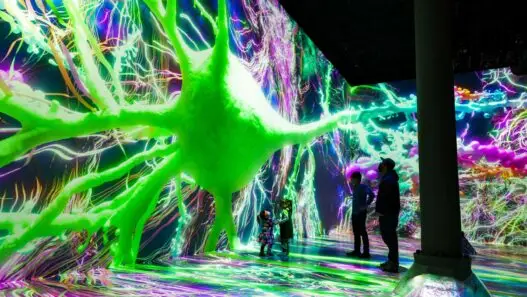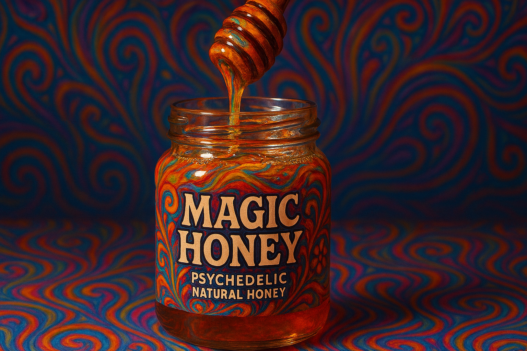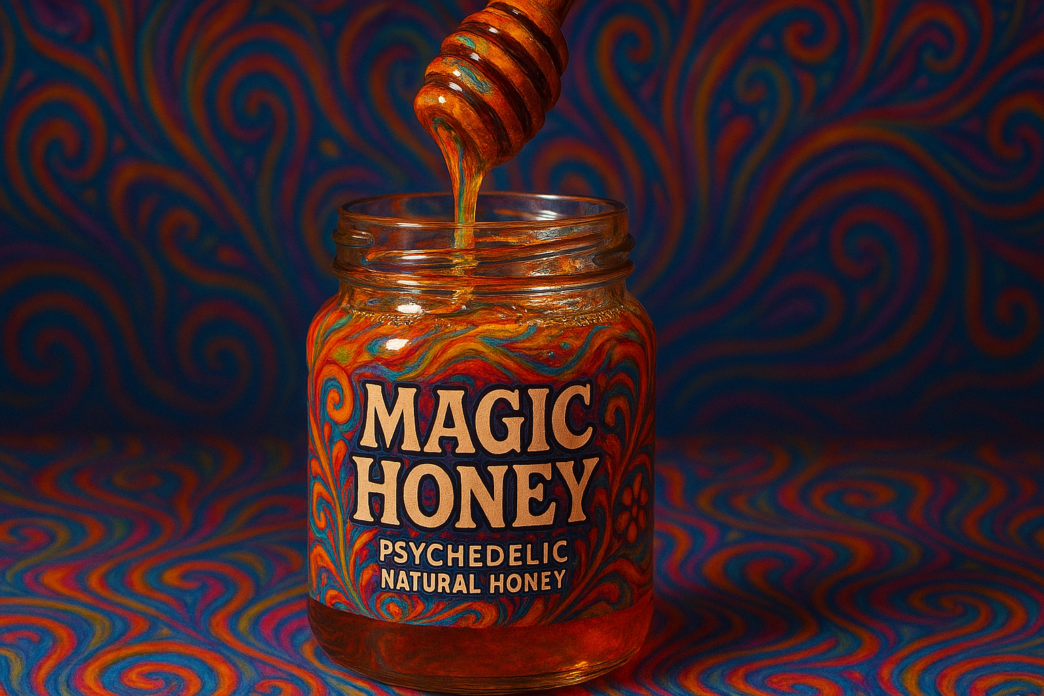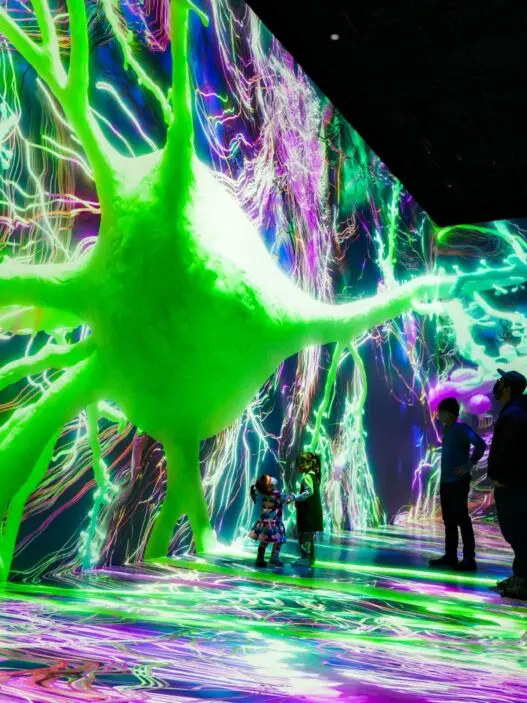In the misty cliffs of Nepal and the highlands of Turkey, a rare substance has fascinated adventurers, shamans, and scientists alike: mad honey. Known for its hallucinogenic effects, this unusual honey isn’t your average sweetener. It’s a powerful psychoactive nectar, created by bees feeding on a specific type of rhododendron flower.
Used for thousands of years in both traditional healing rituals and consciousness expansion, mad honey offers a rare glimpse into how nature blurs the line between medicine and psychedelic experience.
So, what exactly is mad honey, how does it affect the brain, and why was it once prized as both a medicine and a mind-altering tool? Let’s explore.
1. What Is Mad Honey? The Origins of a Psychedelic Sweetener
🔹 Origin: Produced by Apis dorsata laboriosa, the giant Himalayan honeybee
🔹 Regions: Found primarily in Nepal, Turkey, and parts of the Caucasus
🔹 Source: Bees collect nectar from Rhododendron ponticum and Rhododendron luteum—flowers that contain grayanotoxins, a natural neurotoxin
Mad honey is deep red in color and has a bitter, sharp taste—a stark contrast to the golden sweetness of regular honey. The key to its unique effects lies in its active compound:
2. Grayanotoxin: The Molecule Behind the Madness
🔹 Active Molecule: Grayanotoxin I and II
🔹 Mechanism: Binds to voltage-gated sodium channels in the nervous system, prolonging neuronal firing and causing a cascade of effects on the brain and body
🔹 Scientific Insight: Causes vagal activation (increased parasympathetic tone), resulting in dizziness, altered perception, and euphoria (Gunduz et al., 2006)
Unlike traditional psychedelics that target serotonin 5-HT2A receptors (like LSD or psilocybin), grayanotoxins disrupt electrical signaling, producing a distinctly anarchic and dreamlike state.
3. The Psychedelic Experience of Mad Honey
Although grayanotoxin is technically a neurotoxin, in low to moderate doses, it induces altered states of consciousness remarkably similar to low-dose psychedelics:
Subjective Effects Include:
✅ Dizziness and body lightness
✅ Visual tracers and blurring
✅ Dreamlike perception and time dilation
✅ Mild euphoria and detachment from ego
🔹 Onset: 20–40 minutes after ingestion
🔹 Peak Effects: 1–2 hours
🔹 Duration: 3–5 hours
💡 Analogy: Mad honey is like stepping into a foggy trance, where time slows down, and sensory input becomes surreal and symbolic—like the threshold between sleep and waking.
4. Ancient Use: Medicine, Magic, and Warfare
A. Traditional Healing in Nepal and Turkey
🔹 In Nepal, shamans and healers used mad honey to:
- Treat hypertension and diabetes
- Stimulate libido
- Induce spiritual visions and cleansing rituals
🔹 In the Black Sea region of Turkey, mad honey is still used in microdoses for:
- Stomach ailments and digestive disorders
- Joint pain and fatigue
- Stress relief and mild sedation
In small amounts, it acts as a tonic—in larger amounts, it becomes a hallucinogen. This duality is what made it valuable as both a medicine and mystical tool.
“One man’s poison is another man’s portal.” — A local saying among Nepalese honey hunters.
B. Mad Honey in Warfare: A Historical Psy-Op
One of the earliest recorded uses of mad honey was not medicinal—but military. In 401 BC, Greek mercenaries under Xenophon were reportedly poisoned after consuming local honey during the Retreat of the Ten Thousand, experiencing confusion and vomiting.
In 67 BC, King Mithridates VI of Pontus allegedly used mad honey as a weapon. His soldiers left honeycombs along enemy routes, leading Roman soldiers to consume them, become incapacitated, and be easily defeated (Rietschel, 2007).
5. How Does Mad Honey Compare to Classic Psychedelics?
| Feature | Mad Honey | Psilocybin | LSD |
|---|---|---|---|
| Primary Molecule | Grayanotoxin | Psilocybin → Psilocin | LSD-25 |
| Target Receptors | Sodium ion channels | Serotonin 5-HT2A | Serotonin 5-HT2A, Dopamine |
| Experience | Dreamy, dizzy, surreal | Introspective, emotional | Visual, expansive |
| Duration | 3–5 hours | 4–6 hours | 8–12 hours |
| Risk | Toxic in high doses | Low toxicity | Low toxicity |
While not a classic psychedelic, mad honey provokes similar shifts in perception, making it a natural ethnobotanical cousin in the world of altered states.
6. The Modern Psychedelic Perspective on Mad Honey
From a modern psychedelic lens, mad honey is fascinating because it:
🔹 Alters consciousness through a non-serotonergic pathway, offering insights into alternative psychedelic mechanisms
🔹 Has ritualistic and ceremonial roots, aligning with the traditional use of plant medicines
🔹 Encourages humility in dosing—as the line between healing and harm is razor thin
Potential Therapeutic Use?
While there is no clinical research yet on grayanotoxins for mental health, the subjective benefits reported by users—including stress reduction, emotional reset, and altered perspective—mirror those being explored in psychedelic-assisted therapy today.
7. Dangers, Side Effects, and Dosage Caution
⚠️ Too much mad honey can be dangerous.
Overdose Symptoms (Grayanotoxin poisoning):
- Nausea and vomiting
- Drop in blood pressure (hypotension)
- Blurred vision
- Bradycardia (slow heart rate)
- Fainting
🔹 Lethal dose is rare, but effects are unpleasant and potentially serious.
🔹 Safe dosage typically ranges from a quarter to half a teaspoon.
Always source mad honey from trusted vendors and never exceed recommended amounts.
8. Final Thoughts: A Natural Gateway to Altered Awareness
Mad honey is a rare and mysterious substance that reminds us of the blurred boundary between food, medicine, and psychedelic. While it doesn’t act like classic psychedelics, its hallucinogenic and consciousness-altering effects place it within the larger tapestry of ethnobotanical entheogens.
For those exploring altered states through a natural or ancestral lens, mad honey offers a compelling, if unpredictable, experience—equal parts ancient remedy and psychedelic riddle.
Would you try mad honey for healing or exploration? Or is it a reminder that nature’s gifts always come with a warning label?
References:






















